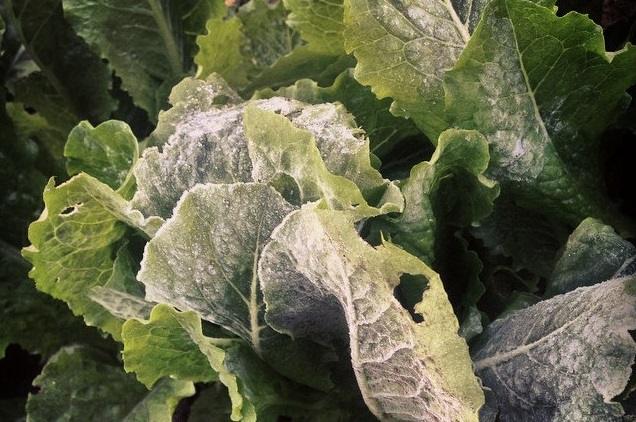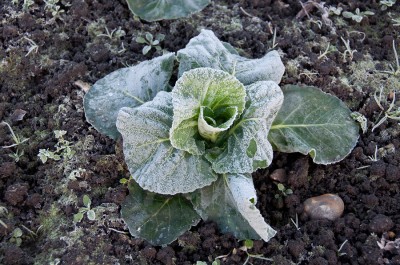Don’t be fooled by the early, warm weather. There is always a possibility to be hit a late spring frost, which could be a killer to your vegetable garden.
To keep your vegetable plants safe, here are a few interesting ways to protect your darling veggies from that last late frost of the year.
Bedsheets, Coffee Cans and More
If you know the night will bring frost, cover your plants. You can use the following protection suggestions:
- Simply cover your plants for the evening with a tarp, bedsheets, pillow cases, burlap sacks or table cloths. These covers will act as insulators.
- You can also insulate and protect your plants by covering them with coffee cans. For small plants, you can use glass jars, milk jugs or even large, plastic bottles.
- There is a way to combine the above two ideas. Tomato cages, stakes or even the mentioned coffee cans should be used to help support the plants from the weight of the covers. The frost will settle on the coverings and not the plants. Your vegetables won’t be crushed by whatever you put on them.
When using coverings, be sure and place stones, bricks or some sort of weights around the edges of the covers to keep them in place.
The Best Deals On Non-GMO Heirloom Seeds Are Right Here!
You must remove any coverings in the morning so the plants can get fresh air and sunlight. An easy rule to remember is to cover plants by 8 p.m. and uncover by 8 a.m. Plants can’t breathe under heavy covers, so you must have the cover off during the day, even if there are several cool nights calling for frost.
Water, Water, Water
There is also a way to protect your vegetables by simply using water. Place a container of HOT water beneath the cover of cans and whatever cover you are using during the night. Since water loses heat more slowly than air, the water will keep the small enclosed area warmer than outside.
You can also water your plants the day before the frost, if you know it’s going to happen. Moist soil maintains heat, and the water will help insulate the roots. Water the ground around the plants until six inches of the soil is moist. Do this during the day before the frost, but d not let the plants, themselves, get wet. Just water the soil.
All-Natural Mulch
A layer of mulch, at least two inches thick, can be placed on and around your vegetable plants. Not only will the mulch protect the plants, but their roots, as well. Mulch can be anything natural, from leaves, grass clippings or straw, to shredded or chopped bark and compost.
Hoop House and Cold Frames
You can place a hoop house or cold frame over your vegetable plants during the night. Then you can easily adjust these structures so you can open them up during sunlight hours. If the garden is small, you may be able to make small, portable buildings that you can lift on and off the plants.
Fans Work, Too
Yes, that’s right, a fan can help save your plants from frost. The size typically doesn’t matter.
DOUBLE Your Garden Production With This New All-Natural Fertilizer!
You can place the fan so the breeze flows gently around the plants. The breeze will prevent any frost from forming on the leaves and stems.
Tips to Know When Frost Is Coming
- If there is no wind and the air is quiet, it will allow cold air to settle near the ground
- If you have put your garden in a high area, there is less chance of frost than if your garden is set in low areas.
- Clouds slow the cooling process, and so help prevent frost.
- Daytime temperatures around 75-80 degrees Fahrenheit, or 23 degrees Celsius, usually keep the nighttime temperatures above 32 degrees Fahrenheit or 0 degrees Celsius.
So, whatever creative way you wish to protect your plants from that late frost, remember to let the sun and fresh air get to the vegetables during the day. Just like us, our plants need sun and fresh air to grow strong and healthy. Prepare for the frost this year, and come out with a well-protected, healthy harvest.
Related:
5 Frost-Resistant Vegetables You Can Plant Super Early
How do you protect your plants from frost? Share your tips in the section below:
Every Spring, Gardeners Make This Stupid Mistake — But You Don’t Have To. Read More Here.
 Off The Grid News Better Ideas For Off The Grid Living
Off The Grid News Better Ideas For Off The Grid Living





